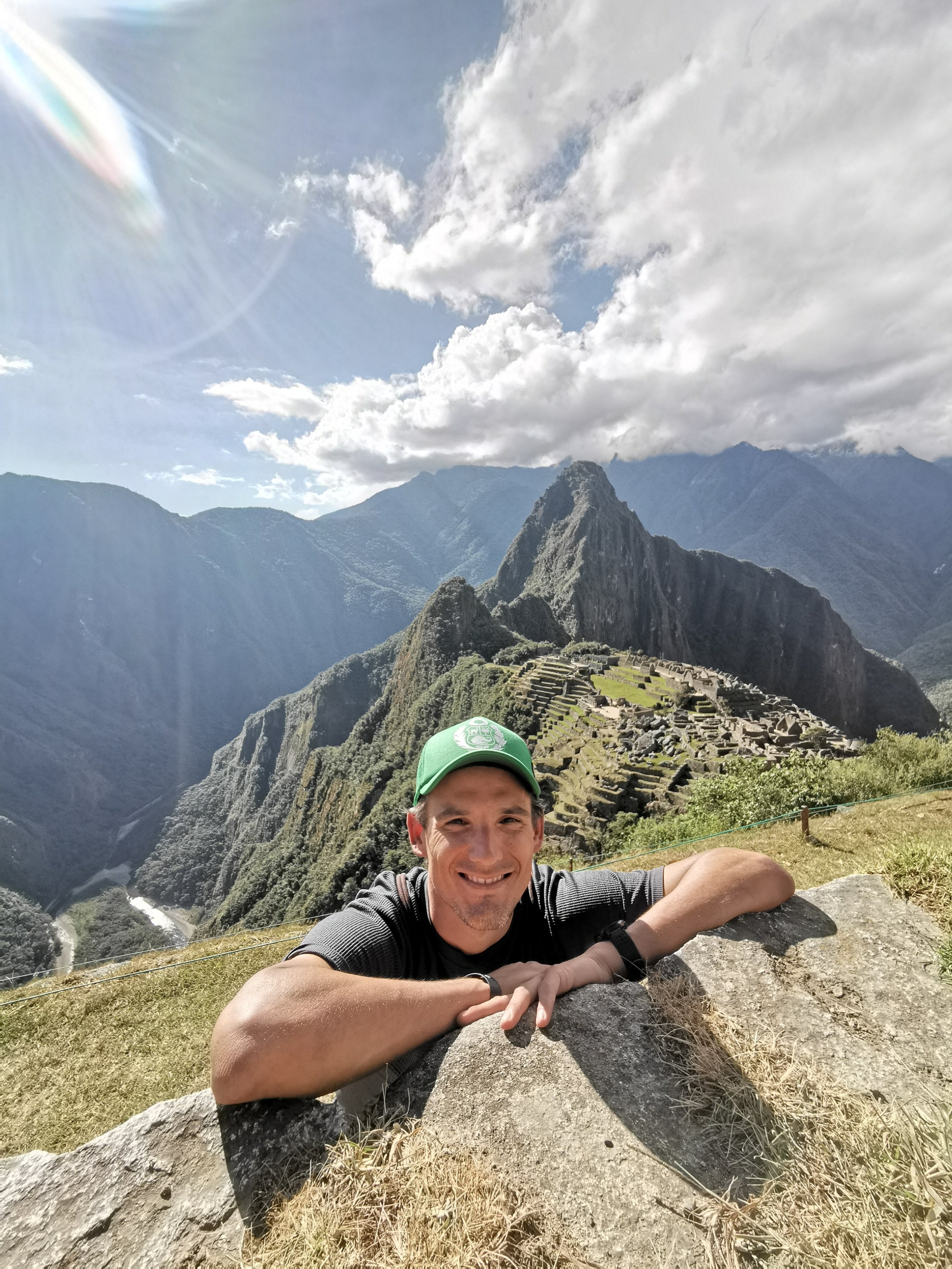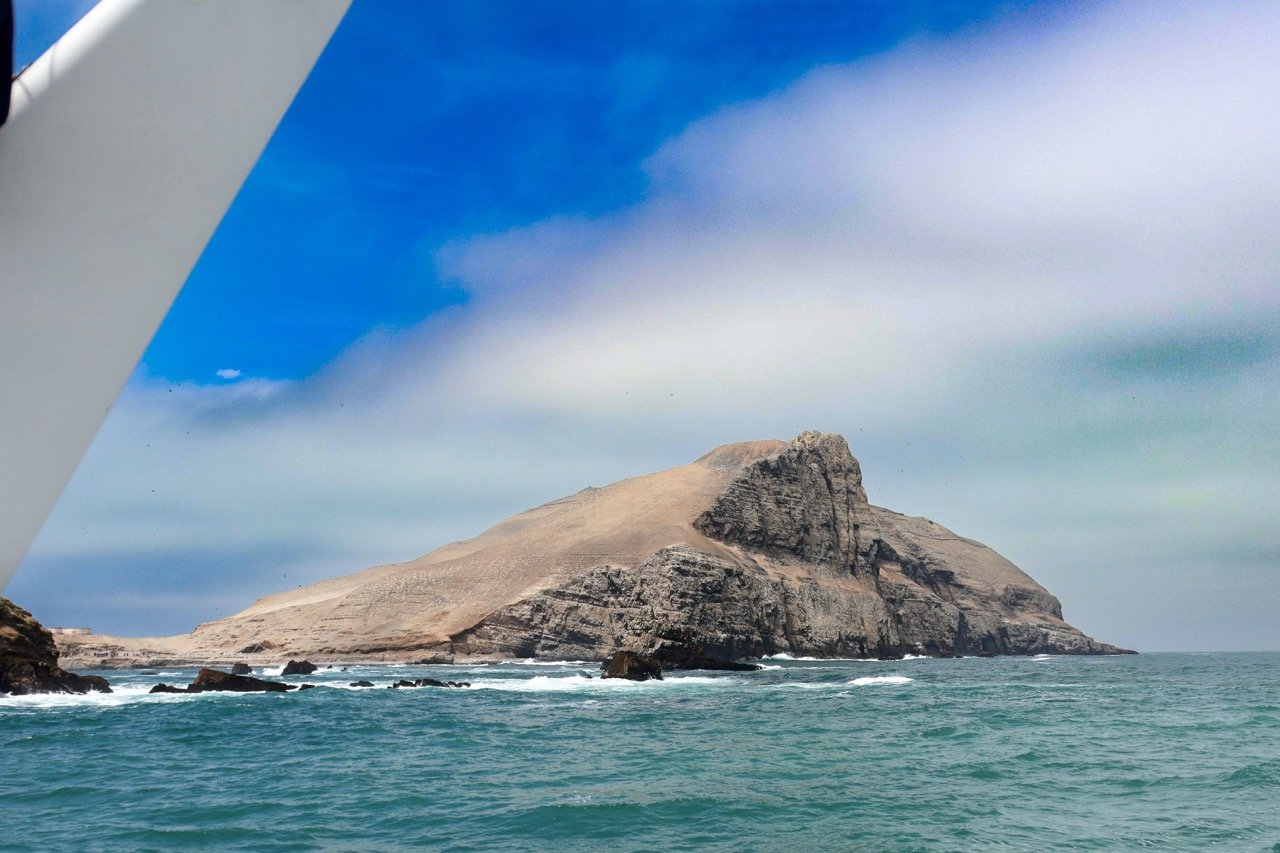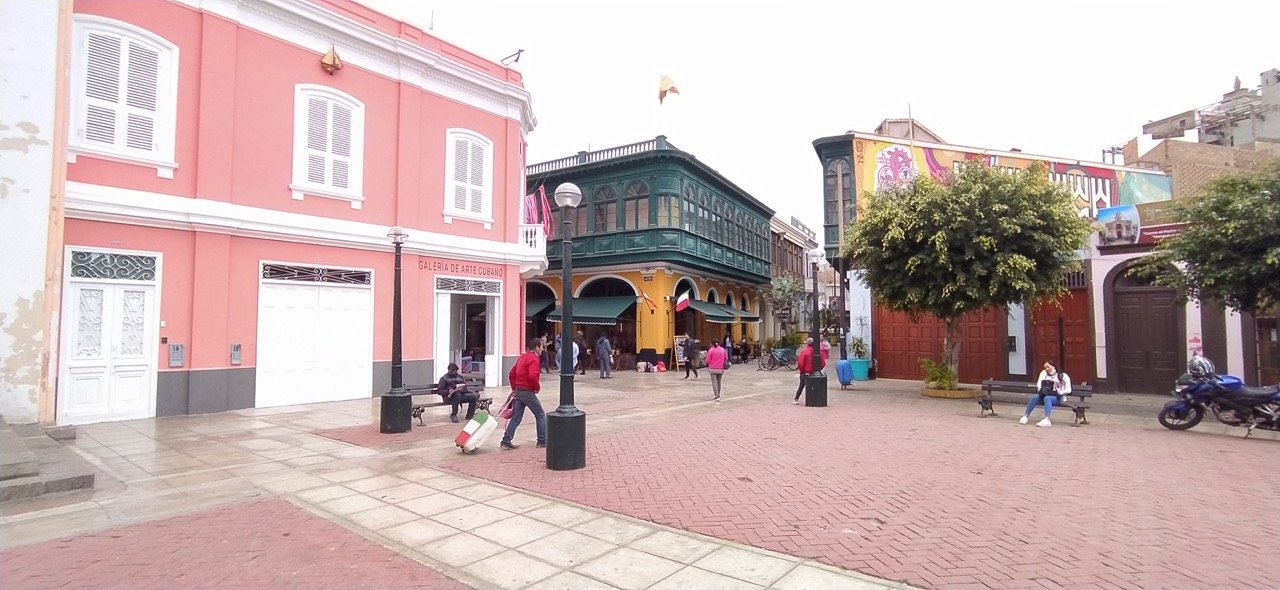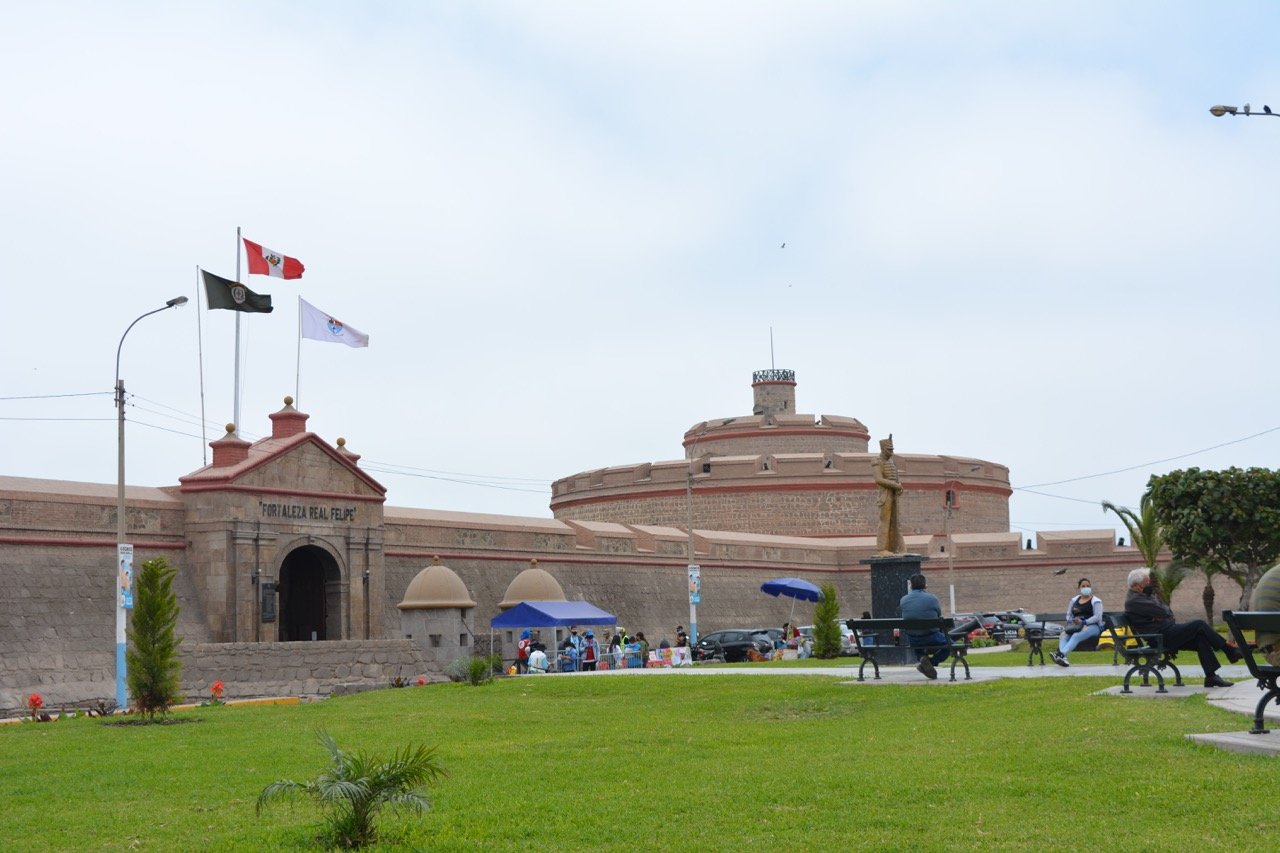2-Day Lima Itinerary - Exploring the City of Kings
Affiliate disclosure: some of the links in this article are affiliate links. If you book using one of them, we’ll earn a small commission. All of our info is free to read and free of ads, so we appreciate it!
Lima, the capital of Peru, is a dramatic metropolis. One of South America’s biggest cities, it spreads out along the Pacific Ocean clifftops in a sometimes lovely, sometimes chaotic sprawl.
You’ll find terrific restaurants, great museums, Colonial buildings alongside sleek modern architecture, and a few pleasant and interesting seaside neighborhoods.
Since you only have two days here, you need to be prepared for a busy schedule and a lot of moving around. To maximize your time, plan on using taxis/Uber to get between different neighborhoods. It’s cheap in Lima, so you won’t spend much and it’ll save you a lot of time and let you see much more of the city.
I’ve tried my best to put together a plan that covers most of my favorite things in the city in a really condensed timeframe. I hope you enjoy it.
Read on for my detailed guide on how to spend two days here!
Table of Contents
Day 1: Historic Center, Surquillo Market, and Miraflores
Get a good introduction to Lima today by starting off in the city center admiring the city’s grand colonial architecture. For lunch, explore the fabulous Surquillo market. In the afternoon, check out the Miraflores neighborhood and go for a stroll along the neighborhood’s seafront promenade.
Morning
Explore the historic city center
Start the morning by grabbing a cab (or bus) and heading straight over to the historic center, home to monumental and impressive colonial architecture. Figure that you’ll need around 3 hours in the center, so I’d recommend getting there by 9:00 am.
If you’re interested in a guided tour, here are a few options:
Small group tour of the city center (3 hours)
Private tour of the city center (4 hours)
Private full-day Lima tour (8 hours - covering the center, Miraflores, & Barranco)
Plaza Mayor
Many of Lima’s most important sights are in the center, and there’s no better place to start your visit than the Plaza Mayor (also called the Plaza de Armas): the city’s central square and historic heart. Grand colonial buildings - including the Cathedral, Presidential Palace, and City Hall - surround the massive square, which is always bustling with people.
The Baroque cathedral still stands on the ground that the conquistador and city founder Francisco Pizarro allocated for it in the 16th century. Head inside to see Pizarro’s tomb and one of South America’s loveliest wooden choirs.
Next, cross the square and admire the enormous Presidential Palace. The changing of the guards is a popular attraction, but it happens at noon, so not this time…
Plaza Mayor
Jirón de la Unión
Make sure to go for a walk along Jirón de la Unión, a pedestrianized street leading off of the main square that is lined with colonial buildings and was for centuries Lima’s most important avenue.
Just off Jirón de la Unión you have the Casa de Aliaga, a well-preserved colonial mansion that was Pizarro’s home for a time in the 1500s, and later that of his ancestors. If interested, you can take a quick guided tour to see the interior (20-30 mins).
A few steps away, you’ll find the pretty Convento de Santo Domingo church, whose cloister and gardens are wonderful to look around.
If you walk down any of the side streets, like Jirón Ucayali, you’ll pass by colonial buildings with gorgeous carved wooden balconies. Palacio de Torre Tagle, a colonial mansion and now home to the Peruvian Ministry of Foreign Affairs, is one particularly pretty example.
Convento de Santo Domingo. Photo: Ingo Mehling, CC BY-SA 3.0, via Wikimedia Commons
Inside Santo Domingo. Photo: Diego Delso, CC BY-SA 4.0, via Wikimedia Commons
Palacio de Torre Tagle. Photo: Miguel Francisco Rueda Ñañez, CC BY-SA 4.0, via Wikimedia Commons
The Archbishop’s Palace. Photo: Diego Delso, CC BY-SA 4.0, via Wikimedia Commons
Basilica y Convento de San Francisco
From Santo Domingo, it’s a 10 minute walk over to the 16th-century Basilica y Convento de San Francisco. The church is a favorite among visitors due to its exquisite library and eerie catacombs, a network of underground tunnels with thousands of crypts full of visible skulls and bones.
MALI Museum
The city’s best art museum, MALI (Museo de Arte de Lima) is the other must-see in the center: walk or take a taxi from Monasterio de San Francisco to Parque de la Cultura, a park where the museum is located. The collection runs the full gamut of Peruvian art from the pre-Columbian to the present day. There’s also a cafe in the museum.
If you’re not interested in art or don’t want to do more than one museum during your stay (you’ll be going to the fabulous Museo Larco tomorrow), then you can skip MALI.
Convento de San Francisco. Photo Diego Delso, CC BY-SA 4.0, via Wikimedia Commons
Afternoon
When you’ve finished up in the city center, grab a taxi and head straight straight for the Surquillo market, where I’d recommend arranging a food tour. You can also do a “self-guided” one, though.
The neighborhood of Surquillo is also walking distance from Miraflores, so it’s super convenient.
Surquillo Market
Lima is absolutely full of markets, but the one in the Surquillo neighborhood is among the best. It’s famous for its seafood, so is the perfect place to try national delicacies like ceviche, leche de tigre, conchas negras, arroz con mariscos and lots more.
To do the market and food justice, I’d really recommend that you do a food tour here. You likely won’t know what a lot of the different food options are, and you certainly won’t know the best stalls/restaurants to try them at, so a guide really enhances your visit.
This small group tour covers both the Surquillo and Surco markets.
Parque Kennedy in Miraflores
From the Surquillo Market you’re only about a 20-minute walk to Parque Kennedy, Miraflores’ main park. The park is a pretty green space right in the hear of the neighborhood. It’s surrounded by shops, cafes, and restaurants. If you want a little dessert following lunch, the churros with hot chocolate at Manolo’s are a Lima tradition.
A curiosity of the park is also that it’s home to a few dozen cats which are taken care of by locals and the park’s caretakers. Cat lovers will obviously enjoy it.
Have a look around the surrounding area, which is always full of people, with a mix of locals and tourists.
Parque Kennedy. Photo: Carlos Figueroa, CC BY-SA 4.0, via Wikimedia Commons
LarcoMar mall
From Parque Kennedy, take a walk down one of the main thoroughfares running off of it in the direction of the ocean: Avenida Diagonal or Avenida Larco. The destination of your walk is LarcoMar mall, a high-end shopping mall that was built directly atop the clifftops, with great views over the pacific. The restaurant Mango’s serves good drinks and snacks and has a great view if you want a break.
But I didn’t really send you to see a shopping mall! It’s just a convenient location from which to start a beautiful stroll along the Miraflores Malecón.
LarcoMar. Photo: Amkatonni, CC BY-SA 3.0, via Wikimedia Commons
Malecón
Lima’s Malecón, a series of interconnected parks that runs along cliffs overlooking the sea, is one of the absolute highlights of any visit to the city.
From LarcoMar, head in the direction of the Lugar de la Memoria, a museum that’s located at the end of the Miraflores section of the promenade. The path meanders through pretty parkland with the ocean always visible beside you and the city stretching endlessly around you. It’s a great place to get a sense of the city’s size.
You can wander for several miles, stopping at sights like the brightly-decorated Parque del Amor (lovers’ park) and the Parque Chino, which features a garden and Chinese Pavilion. If you get tired, Buenavista Cafe is about halfway through the walk and has great views.
The Chinese Pavilion along the malecón
Parque del Amor. Photo: Felipe Restrpo Acosta, CC BY-SA 4.0, via Wikimedia Commons
Lugar de la Memoria
I’d recommend ending your stroll at Lugar de la Memoria, a museum and monument that delves into the period from 1980 to the early 2000s when Peru was convulsed by violence during fighting between the guerrila-terrorist group Sendero Luminoso (Shining Path) and the authoritarian Peruvian government.
If you aren’t interested (or don’t speak Spanish - there is no English translation) you can just take a look at the impressive building.
From the museum, you have some options. If you want to explore further, you could head inland and make your way to Avenida Mariscal La Mar. It’s a street full of some of Lima’s best seafood restaurants, and there are also lots of great cafes. You could also head over to the Museo Amano, a small museum dedicated to Pre-Columbian textiles in Peru.
If you’re whipped after a long day, head back to your hotel for a break before dinner.
Evening
Dinner in Miraflores
This evening, treat yourself to a great meal. I’d recommend eating in the Miraflores neighborhood (which is probably where your hotel will be). There are so many options that making just one recommendation is impossible. For some help finding the perfect spot for you, take a look at our guide to the best restaurants in Lima.
That said, Panchita is always a good option if you want something upscale, but not pretentious. If you want seafood, you have lots of options but do know that ceviche (and certain other seafood dishes) are really a lunchtime meal, so if you want something like that for dinner you’re often best off choosing a restaurant that caters to international diners.
Day 2 - Callao, Museo Larco, and Barranco
Today, do something a bit different and spend the morning and early afternoon enjoying the little-visited Callao area of Lima. Here, see the Callao Monumental project, the La Punta district, and hop a boat ride to the Palomino islands.
Visit Museo Larco’s incredible pre-Columbian art collection in the afternoon and wrap up your stay in Lima with dinner and drinks in the Barranco neighborhood.
Palomino islands off the coast of Lima/Callao
Morning
Before getting into the morning’s plan, it’s important to go over a few things regarding safety in Callao, the part of Lima that you’ll be visiting.
Callao has a reputation for being one of the most dangerous places in Peru and no-go zone for both locals (who don’t live there) and visitors. That reputation is not unearned and much of Callao can indeed be dangerous.
However, in the last 5 years a lot of money has been invested into certain areas of Callao (the historic center and La Punta - where you’ll be going), and a project of urban “rejuvenation” has really changed things.
The area that I recommend you visit is safe during the day time, provided you don’t go off randomly wandering in the complete wrong direction. Plenty of visitors visit this area of Callao on their own and have a good time. You can too. Just be alert and pay some attention to your surroundings.
That said, if you’re interested, but don’t feel confident going on your own, you can visit with a guide.
Callao
Enjoy a leisurely morning and then grab a taxi and head to Callao, From Miraflores, it will take about 40 minutes.
Callao, home to Lima’s airport and port, is technically a separate city, but it’s essentially just another neighborhood of Lima. You’ll be visiting the historic center of the city (centro historico) as well as Chucuito and La Punta, which are all next to each other.
Ask to get dropped off directly at Monumental Callao (which is still widely known as Casa Ronald, it’s old name).
Monumental Callao/Casa Fugaz
Monumental is a neighborhood of Callao next to the port, and it’s the city’s historic center. Sometimes you’ll hear it called monumental, other times centro historico, but they both work.
The original heart of Callao, this is also one of the oldest areas of all of Lima and has what was undoubtedly once some very lovely architecture. It’s one of very few parts of the capital that has any of this original architecture remaining (mostly from the 1700s and 1800s), although most of it is not preserved well. You can feel how old the area is.
Many decades of poverty led to the neighborhood, alongside that of neighboring Chucuito, becoming regarded as one of Peru’s most dangerous. So, the opening of Casa Fugaz (also simply known as Monumental Callao), a sort of gallery and artist incubator hub housed in a renovated mansion, was a big deal.
This is your first stop here!
Inside, there are 14 different galleries with all different types of exhibits from local artists. You’ll also find workspaces, a music recording studio, shops, offices, and a cafe and restaurant,
Since the project began, crime in the surrounding area has dropped by 90% and locals have begun to return to an area that was previously regarded as too dangerous to visit.
Nearby, the historic buildings are somewhat similar to those that you’ll have seen in Lima’s center, but generally much smaller. Many are painted in pretty pastel colors. You’ll see lots of wooden balconies, narrow pedestrian streets, and a lot of street art. This is the spot for Lima’s best street art, with massive murals that give a window into life here, social issues, and local culture.
A square in Callao’s historic center. Photo: Johnattan Rupire, CC BY-SA 4.0, via Wikimedia Commons
Street art near to Monumental Callao. Photo: Johnattan Rupire, CC BY-SA 4.0, via Wikimedia Commons
Fortaleza del Real Felipe
A few minutes away from Monumental Callao is the Real Felipe Fortress. Built in the 1700s to defend Lima and the port of Callao from pirate incursions, it’s a massive structure that today has various uses; it houses a museum as well as a military barracks. It’s an impressive structure and a wander along the walls and fortifications is actually pretty interesting. The views are good too.
Fortaleza del Real Felipe. Photo: Isabelle Falcon, CC BY-SA 4.0, via Wikimedia Commons
Chucuito
The tiny neighborhood of Chucuito sits in between the historic center and La Punta. Originally settled by Italian fishermen in the 1800s, many of the historic buildings here are wooden, which is quite unusual in Lima. They’re also painted in pretty pastels, and it will take you a few minutes to walk through the area on your way from the fortress to La Punta.
La Punta
La Punta is the neighborhood on the little peninsula jutting out into the sea next to Callao’s center and port. Unlike the surrounding area, it’s wealthy and upscale; home to Callao’s well-to-do residents, many military officials among them.
It’s a seaside area full of mansions, a yacht club, a pretty seafront boardwalk, lots of nice parks, a pebbly beach, and loads of good seafood restaurants. It’s the perfect place for a walk and lunch while you’re in Callao. It is very safe.
Unlike most of Lima which is high on cliffs above the sea, the interesting thing about historic Callao and La Punta is that you’re at sea level, and you can feel it. The atmosphere is very different from the rest of Lima.
Another pleasant aspect is that you’ll see very few foreign tourists here and it has a very local feel.
The beach in La Punta. Photo: sergejf, CC BY-SA 2.0, via Wikimedia Commons
Palomino islands boat tour
For something a little different, you can also take a 1.5-3 hour boat tour out to the San Lorenzo and Palomino islands from Callao. You’ll see sea lions, seals, and lots of different birds. It’s fun if you have the time in your schedule.
Boats mostly depart from Plaza Grau in Callao’s historic center (by the port), but you can also check directly in La Punta at the docks and see if tours are a possibility.
This tour on Viator is a solid option. It’s offered by the company Mar Adentro Excursiones, which is well regarded.
Palomino islands. Photo: KaliTodd.com, CC BY-SA 4.0, via Wikimedia Commons
Afternoon
Museo Larco
Having sufficiently explored Callao, say goodbye to the seaside and get a taxi back to central Lima. You’re going to the incredible Museo Larco in the Pueblo Libre neighborhood.
The museum, housed in a gorgeous building with an even more gorgeous garden, houses an astonishing collection of Pre-Columbian artifacts, with lots of ceramics, gold and silver jewelry, and textiles. All of these things are great, but the star attraction is a gallery showcasing a very unusual and very interesting display of erotic pottery from Inca and pre-Inca cultures. The more modest among us may find themselves blushing!
Expect to spend 1-3 hours here.
The museum is open 7 days a week from 9:00 am to 7:00 pm. Find out more on their website.
Gold jewelry at Museo Larco. Photo: Velvet, CC BY-SA 4.0, via Wikimedia Commons
Antigua Taberna Queirolo
After visiting Museo Larco, walk over to Antigua Taberna Queirolo, a beloved Lima restaurant & bar that has been open since 1880. It’s about a 10 minute walk and the area you’ll pass through is pleasant and safe.
The atmosphere is a bit nostalgic, and it reminds you of a Lima that is no more. But you’re not here for nostalgia, you’re here for pisco! They do a fabulous chilcano and Pisco sour, so it’s a great place to sample the national liquor if you haven’t already.
After a drink, you could shoot over to Miraflores for a wander, or, if it’s already late in the day, head back to your hotel to freshen up before the evening.
Evening
Barranco
Wrap up the day enjoying an evening wander in the hip Barranco neighborhood. You should also plan to have dinner here and drinks afterwards!
Barranco is next to Miraflores, but it feels quite different. The buildings are smaller and less modern. There are fewer big commercial spaces, fewer chain restaurants, and tighter streets. It often gets called “bohemian” which I think is a stretch, but it is a different vibe.
It’s really nice.
Puente de los Suspiros
Have your taxi drop you off at Puente de los Suspiros. The bridge, whose name translates to “the bridge of sighs”, is located in a pretty part of the neighborhood and the surrounding square, lined with lovely restaurants, is very atmospheric and romantic.
The buildings here are smaller and older than in Miraflores, and the vibe is a little bohemian. It’s a very pleasant neighborhood to go for a walk, and the evening is the best time to do it.
Once you’ve walked over the bridge and done some people watching in the surrounding park, go for a wander. This is the center of the neighborhood, so whichever direction you go in will bring you past countless bars, restaurants, boutique shops, and lots of excellent street art. The atmosphere is always lively.
If you’re interested in doing a little shopping, the boutique/art gallery Dédalo is definitely worth a look for unique items.
Puente de los Suspiros. Photo: HLaiza, CC BY-SA 4.0, via Wikimedia Commons
Dinner and drinks
For an excellent dinner, try out Mérito or Isolina. If you want somewhere sleek with really excellent atmosphere and views, dine at Cala right on the waterfront.
After eating go for some drinks!
Barranco has a couple of craft beer bars (Invictus and BarBarian) as well as loads of fancy cocktail bars, tradition peñas (local bars with live music), rock bars, and clubs.
For a bit of live music, Noche de Barranco is always a good choice. The music is varied, but often rock or jazz. Check their calendar on their website.
For cocktails, the bar at Hotel B is very cool, as is Ayahuasca, which feels a little bit like drinking inside of your bohemian (but rich) friend’s mansion - which it sort of is!



Nicholas Cino
Peru Expert based in Lima
¡Hola y buenos días! 👋
I'm Nicho, and I've been a travel consultant here in Peru for the last 20 years. If you're looking for some local advice on your trip, I'd love to help!
Learn more Book a consultation
Connect with Nicho




























